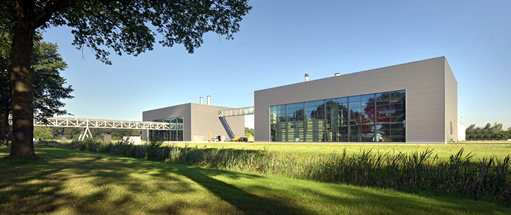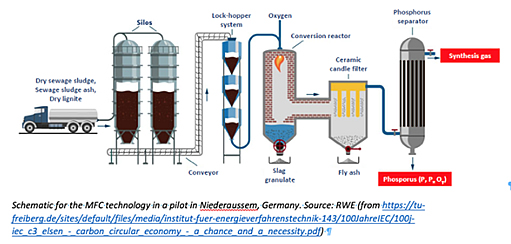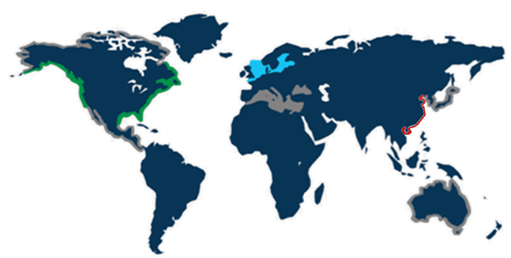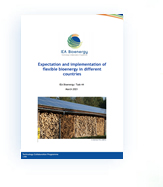 |
|
March 2021
|
|
|
|
|
|
ExCo 87
Due to the ongoing COVID-19 pandemic, the ExCo87 meeting will take place as a Virtual meeting in three sessions on the 18-19 May. |
|
|
|
|
|
|
|
|
IEA Bioenergy Conference 2021
The three-yearly conference of IEA Bioenergy will be held on this occasion as a series of online sessions in the period 28 November to 9 December 2021. The central theme will be around the role of biomass in the transition towards a carbon neutral society.
There will be one or two sessions per day, and schedules will be fixed to facilitate participation from all over the globe. Each day will be dedicated to a specific topic.
Participants will be able to register for the sessions of their interest. On-line participation will be free of charge, but pre-registration will be required.
More info will be available here.
|
|
|
|
|
|
|
|
|
Campaigns questioning the use of woody biomass for energy are missing key facts
Several media campaigns and publications that criticize the use of biomass for energy contain misconceptions, particularly misrepresenting on-the-ground sustainable forestry practices, ignoring the fact that wood production and use is part of the biogenic carbon cycle, and discrediting international greenhouse gas accounting principles. IEA Bioenergy, and recently also the Joint Research Centre (JRC) of the European Commission, have published reports and articles to dispel some of these misconceptions in relation to forest biomass and de-toxify the debate surrounding the sustainability of wood-based bioenergy.

|
|
|
|
|
|
|
|
|
ExCo86 eWorkshop: Contribution of sustainable biomass and bioenergy in industry transitions towards a circular economy – Summary and conclusions
This publication provides the summary and conclusions from the eWorkshop ‘Contribution of sustainable biomass and bioenergy in industry transitions towards a circular economy’ held in conjunction with the Virtual meeting of the Executive Committee of IEA Bioenergy on 19-20 October 2020.


|
|
|
|
|
|
|
|
|
Task 33
Emerging Gasification Technologies for Waste & Biomass
Gasification is a flexible thermal conversion process with wide-ranging applications in sectors such as heat and power generation, transport fuel and chemicals production. This report, developed by IEA Bioenergy Task 33, provides a closer examination of a number of emerging gasification technologies, i.e. technologies that are novel or have different characteristics compared to state-of-the-art gasification technologies.
 

|
|
|
|
|
|
|
|
|
Task 34
Round Robin results of biomass liquefaction oils
A round robin study was performed to evaluate the analysis of biomass liquefaction oils (BLOs) from fast pyrolysis and hydrothermal liquefaction (HTL), with data coming from 14 laboratories in seven countries. The goal was to assess the current status of analytical techniques for the determination of nitrogen, sulphur, and chlorine content in biomass liquefaction oils and to evaluate potential differences in origin (i.e., fast pyrolysis versus HTL). The BLOs were produced from a range of feedstocks including pine, mixed softwoods, forest residues, microalgae, miscanthus, and wheat straw to cover a variety in nitrogen, sulfur, and chlorine contents and speciations.
The full article in the Journal Energy & Fuels is available here.
|
|
|
|
|
|
|
|
|
Task 36
A compliation of case studies: Lessons learnt on material and energy valorisation
During 2021, IEA Bioenergy Task 36 will publish a compilation of case studies aiming at exploring lessons on material and energy valorisation of waste within the framework of the Task. The set of case studies will cover social and public acceptance aspects, barriers in Waste-to-Energy (WtE) implementation, success stories for decentralized solutions, and integration of WtE within material and/or nutrient recovery. The purpose of these case studies is to showcase examples from which countries can get inspiration and support in implementing suitable policies and solutions in the waste/resource management and WtE sector that would facilitate their transition towards circularity. The first case study “Waste-to-Energy and Social Acceptance: Copenhill Waste-to-Energy plant in Copenhagen” describes technical and economic aspects of the Copenhill plant, and how Amager Resource Center (ARC), owners of Copenhill, and the residents in the city of Copenhagen found a way to share a common area in which everyone could feel safe and contribute to a more sustainable city while still being a profitable business.

|
|
|
|
|
|
|
|
|
Task 39
Low carbon intensive, Drop in Biofuels continue to be a priority for Task 39 and the Task is fortunate to have the active participation of industries ranging from “refineries” to “customers” (I.e. aviation, marine). The Tasks biomarine and biojet draft reports are currently out for internal review and should be publicly available by mid-year. Although good commercial progress is being made, effective policies will be required to bridge the price differential between fossil and lower carbon intensive drop in biofuels.

IMO world map for emission control areas in 2020. Globally there is a 0.5% sulphur limit. Sulphur emission control areas (SECAs) include the Baltic- and The North sea area (blue) with a 0.1% sulphur limit, the North American ECA (green) with a 0.1% sulphur limit, Chinese National waters (red) additional restrictions for open loop scrubbers, and discussed future ECA (grey) (DNV-GL. Maritime global sulphur cap., 2020). Low carbon intensive and sustainable biofuels are part of the solution to meet these sulphur limits and also reduce the GHG emission generated by the marine sector
|
|
|
|
|
|
|
|
|
Task 43
Variable demand as a means to more sustainable biofuels and biobased materials
Expanding the use of crop based biofuels is controversial because of concerns about competition with food. This paper describes how varying the biofuel demand could help address these concerns. Variable biofuel demand can be implemented through market or policy mechanisms that adjust biofuel production according to feedstock availability, expanding or contracting in response to supply surplus or limitations. Based on a survey, an expert workshop, and relevant literature, the effects of a variable biofuel demand approach were evaluated with respect to food security, agricultural productivity, detrimental land?use change, and feedstock competition with biobased chemicals and materials. The paper provides evidence that variable biofuel demand can enhance the synergistic development of agriculture, renewable biomass feedstocks and biofuels, but implementation faces several challenges.
The BioFPR journal paper is available here
|
|
|
|
|
|
|
|
|
Task 44
Expectation and implementation of flexible bioenergy in different countries

The report gives an overview on the status and the expectation of flexible bioenergy in eleven OECD countries, looking at different approaches for flexible bioenergy, and summarising the drivers and barriers. It describes the general role of bioenergy in the power, heating and cooling, and transport sectors, and gives an outline of the transition towards renewables and the related status of flexible bioenergy regarding policy framework, obstacles and bottlenecks, as well as the incentives. As a conclusion, technological barriers are not seen to be a major challenge, but rather an economically feasible integration of the technologies in the overall energy system. Coherent policy support to integrate flexible bioenergy in the energy system is considered as necessary. To unlock the potential benefits, the report proposes a stronger link between flexible bioenergy and other options for flexibility, such as demand side management, energy storage, power-to-X and also green hydrogen.

|
|
|
|
|
|
|
|
|
Webinar: Flexible Bioenergy in Renewable Energy Systems
A webinar presented by Task 44 on 18 March had a focus on both technical and market aspects of flexible bioenergy in renewable energy systems. Bioenergy can play multiple roles in the energy system and flexible bioenergy concepts have potential to provide low-carbon dispatchable resources in terms of long-term storage, peak demand/back-up and demand response. However, the flexibility of bioenergy as well as attractive business cases motivating flexibility provision need to be developed. The webinar presented the findings on technical options for providing flexibility from bioenergy and framework conditions and expectations in different countries.

|
|
|
|
|
|
|
|
|
Events
EUBCE – 29th European Biomass Conference and Exhibition
26-29 April 2021
EUBCE brings together the greatest minds and latest advancements iin biomass, with the aim of accelerating research and uptake market across the globe. During the conference, over 2,000 experts from both academia and industry share and discuss groundbreaking ideas, ,technologies, applications and solutions for th esourcing, production and utility of biomass. The scientific programme is coordinated by the Joint Research Centre of the European Commission.

BBEST / BioFuture 2021
24-26 May 2021
BBEST / BioFuture 2021 – The Brazilian Bioenergy Science and Technology Conference and the 20-country Biofuture Platform multilateral initiative have joined forces to bring together the world´s very best in policies, innovation, science and market outlook in the bioenergy and bioeconomy sectors, in a landmark event which will take place from May 24-26th, 2021. This unique event will combine two different conferences in one: the second Biofuture Platform policy conference (BIOFUTURE SUMMIT II), and the fourth edition of the Brazilian Bioenergy Science and Technology Conference (BBEST).

IEA Bioenergy Webinar Save the Date
A free IEA Bioenergy Webinar on “Residential wood combustion – towards low emission systems” will be held 6 May 2021.

|
|
|
|
|
|
